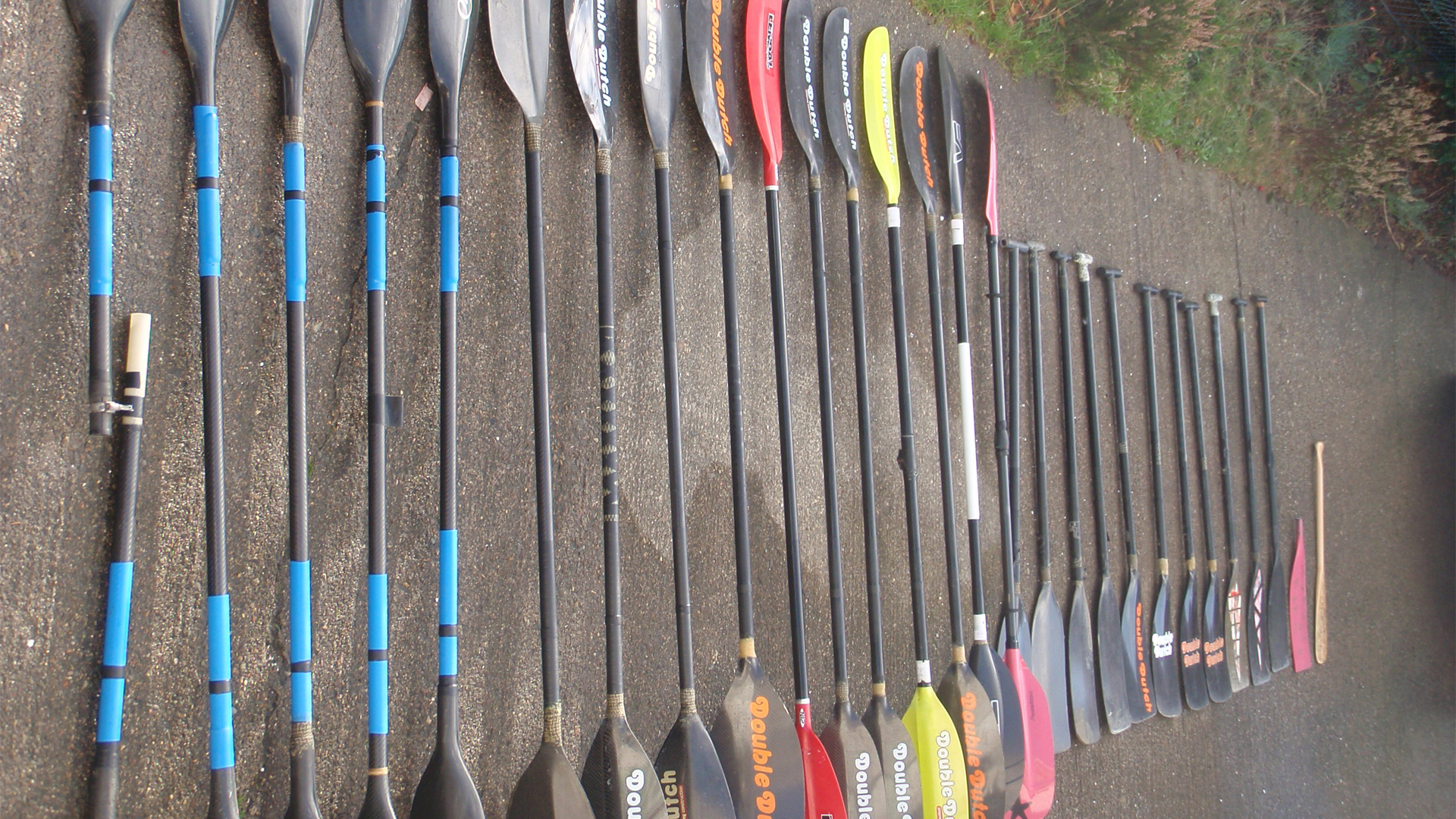This post is basically the text of an email reply to questions about paddling with crank-shafts. Take it or leave it as you see fit.
Crank shafts were introduced into canoe slalom in the UK in the late 1980’s. Richard Fox (5 times K1 Slalom World Champion) was the main driving force behind them. They were introduced in an attempt to improve performance during bow rudder strokes.
When the arm is fully extended during a bow rudder the outer fingers of the bottom hand tend to peel away from a straight shaft, at the same time the wrist is also ‘cocked’ at an angle away from straight extension. With the introduction of the crank shaft the wrist could be held straight and the hand could still grip the shaft with all 5 digits with the arm fully extended. The theory was that this would result in more power being transferred to the blade, giving a stronger bow rudder stroke and so an increase in performance over the length of a slalom course.
A measurable (though very small) performance gain was quoted. However it was also known that there was an optimum crank angle and even a small deviation from this angle would result in no gain or a even loss in performance. As mentioned in previous posts cranks also come with a number of (though relatively minor) drawbacks.
The crank shaft was first introduced to the world stage when Fox used one to win the 1989 World Slalom Championships. I don’t think a major flatwater K1 championship has been won using cranks, though I may be wrong on that one…
However, somewhere further along the line things became a little blurred and the crank was rejuvenated as a cure all for sea kayaking wrist, elbow and shoulder problems.
One slight drawback of cranks on wings that hasn’t been mentioned is the fact that a wing paddle on the none-control hand (when used on a straight shaft with a relaxed hand grip) will tend towards the correct feather angle in the water itself – a crank on the none control hand can interfere a little with this.
At the end of the day paddle with whatever you feel comfortable with.
To move slightly away from the original post:
“But I changed to cranks and my wrist problems went away!” Yes that may well be the case. However I would suggest it is more likely due to the fact that you had an enforced rest. And then on your return you took it easier and gave more consideration to your technique and fitness, in order to avoid a return of those unpleasant wrist problems.
Repetitive type injuries and conditions (as opposed to incident /impact injuries) relating to joints and connective tissues of the arm can be brought on and aggravated by various factors:
-
- Too much too soon – the most likely factor is increasing the workload too quickly; whether it is raising the number of paddling sessions, increasing mileage or speed, upping boat weight or even going from regular paddling in calm conditions to prolonged poor weather paddling – all should be done in gradual increments. Experienced paddlers can (and do) suffer from this as well as less experienced paddlers; workload itself is not the most significant factor – rate of change of workload is. And this relates to your recent sustainable workload, not what you did or could do 5 or ten years ago or what you are capable of doing in other activities!
-
- Imperfect grip – poor technique relating to the grip and hand positioning/movement can cause strain. A light open grip with opening fingers on return phase of stroke will help. Sometimes a slight wrist rotation of the none control hand when feathering the paddles can be a factor.
-
- Too stiff, too large – paddling with a shaft that is very stiff or with paddle blades with too large a surface area will likely cause problems as the shock loads are passed up the arm – something tends to give eventually. Bear in mind that for the same construction a split shaft or cranks will likely be stiffer than a one piece shaft.
-
- Change of kit – this develops from the too much too soon idea. New kit probably doesn’t perform the same as your old kit so if you change to a new style of blade or boat etc then ease off the workload a little until things have had time to adjust.
-
- Shaft diameter – different size hands need different size paddle shafts. Too large, too small can cause problems, but it is usually too small that causes the more significant problems. These are more likely to be seen as problems in the hand and fingers rather than the wrist – numbness, pins & needles, circulation problems and finger tendonitis.
-
- Inappropriate feather – a very individual thing!
-
- Non-paddling activities– RSI type factors such as overuse of computer keyboard/mouse, power tools etc. Also alternative sports (or any activity with repetitive hand movements) may cause problems when linked with paddling.
-
- Latex cuffs – not entirely convinced by this one but there have been numerous examples of paddlers who think that too tight a latex wrist cuff have caused aggravation.
-
- And sometimes there just doesn’t seem to be an obvious reason – s**t happens I suppose.
